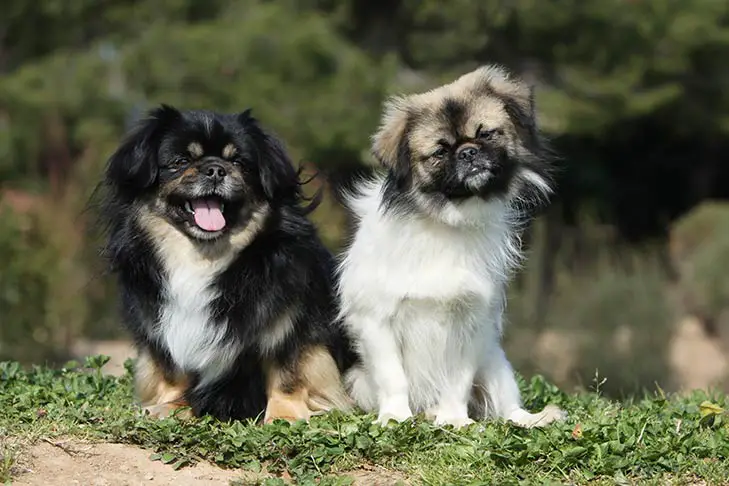The energetic and inquisitive Tibetan Spaniel was developed centuries ago to serve as a sentinel on the walls of Tibetan monasteries. The Tibbie develops a close, adoring attachment with their owners and is distinguished by a flat, silky coat and a “lion’s mane” around the neck. They are uniquely Tibetan, with blunt noses, large expressive eyes, a ‘lion’s mane’ around the neck, and a plumed tail gracefully flowing over the back. Are they, however, spaniels? Not in the Western sense of Cockers or Cavaliers, though. Tibbies, on the other hand, pay homage to the ancient customs that gave rise to Pekes, Pugs, Lhasas, and other distinctly Asian breeds. Tibbies have a shoulder height of roughly 10 inches and move rapidly and deliberately. They can be seen wearing a variety of colors and pattern coats.
Tibetan Spaniel
Average sizes and life
expectancy of the breed.
Height
10 inches
Weight
9-15 pounds
Life Expectancy
12-15 years
Breed Traits & Characteristics
About the Breed

Owning a dog is not just a privilege; it’s a responsibility. They depend on us for, at minimum, food and shelter, and deserve much more. When you take a dog into your life, you need to understand the commitment that dog ownership entails.
 Health
Health
Recommended Health Tests From the National Breed Club:
- Patella Evaluation
- Ophthalmologist Evaluation
 Grooming
Grooming
 Exercise
Exercise
A daily walk is always enjoyable to a Tibetan Spaniel. They are as happy lying around the house as they are taking a long run in the yard. A fenced yard is a must. They are a great breed for owners who would like a dog to accompany them on long walks or jogs, as they are able to keep up with their human partner.
 Training
Training
 Nutrition
Nutrition
History
In Eastern mythology and belief, respect for animals has a unique position. In that vein, Tibetan local dog breeds were fostered and preserved by Buddhist monks. Tibbies were mostly maintained by the monks as friends, but they also served as watchdogs alongside their powerful cousins, the Tibetan Mastiffs. Tibbies were horizon-scanning sentinels who perched above the monastery walls and looked out for allies and enemies. Additionally, they probably made comfortable bed warmers on those chilly Himalayan nights.



